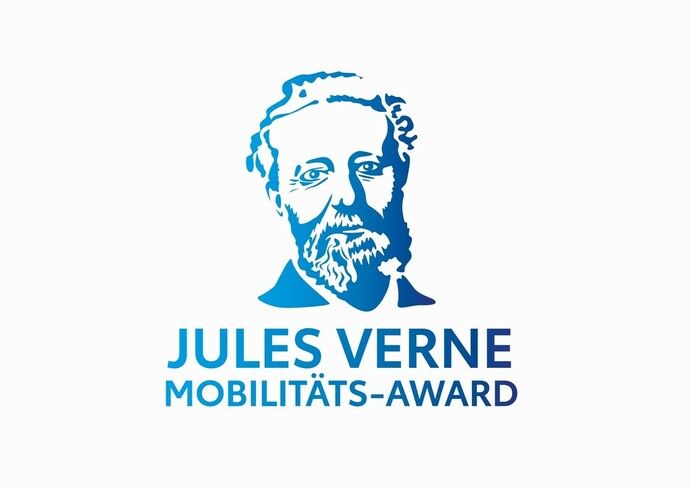Jules Verne Mobility Award. Image: Union of Authors/Toyota
Hydrogen is one of the major issues of our time. According to many experts, as a renewable energy source, it is necessary to achieve the European Union’s goals on climate neutrality by 2050. That is why hydrogen once again takes a place in the center of the Jules Verne Mobility Awards, which Toyota presents with its partners. Until May 19, 2023, publications in print and electronic media that were published between January 1, 2022 and March 31 of this year and deal with the topic in a scientifically sound and in-depth manner will be searched for.
For the first time this year, projects will also be awarded by schoolchildren dealing with the topic of hydrogen. We are looking for presentations, papers, and articles as well as other projects dealing with current issues related to hydrogen and hydrogen mobility. Prize money of €750 is planned for the winning entry of this particular category, for second and third places €500 and €250 respectively. Regular prize winnings contributions are €3,000 (1st place), €2,000 (2nd place) and €1,000 (3rd place). The decision is made by an expert jury.
The aim of the award is to give the technology a greater stage in the public discussion and to highlight all potential application areas of the energy source, including critical ones if necessary. As early as the 19th century, French writer Jules Verne, the namesake of the Mobility Prize, predicted that hydrogen as a technology carrier was an important key to a zero-emissions future.
The award ceremony will be held as part of the “Technology Night” on June 16 at the headquarters of Toyota Deutschland GmbH in Cologne) regularly to the adventurous night to teach technology and inspire young people for technical careers. (AUM)
Homepage

“Certified tv guru. Reader. Professional writer. Avid introvert. Extreme pop culture buff.”







More Stories
Samsung Quantum Dot TV: Art meets technology
Pitch: €56m for energy startup Reverion
Plastoplan: Plastics for Energy Transition